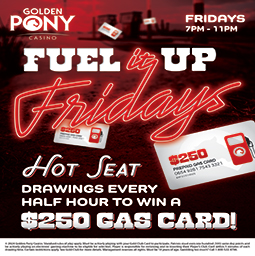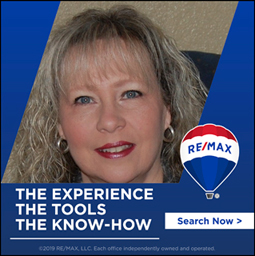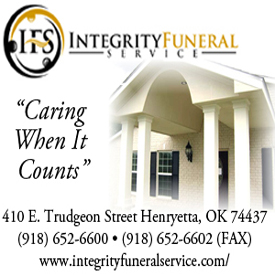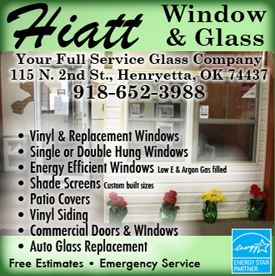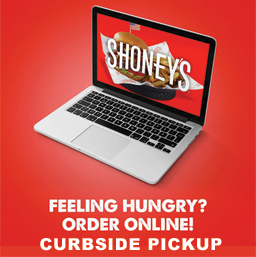This contains my memories of things that took place over the years when Oklahoma still had prohibition after national prohibition was repealed by the 21st amendment to the U. S. constitution in 1933. It does not include all the many, many historical facts about the process – just the significant ones I remember. I have been aware of the details about Oklahoma’s 1959 repeal of prohibition for many years, but some facts may have differed to some degree from my memories. I apologize for that, but I think the facts. as presented, are close enough to give a general idea of the process.
When nationwide prohibition was repealed in 1933, prohibition continued in Oklahoma because sale of alcohol was prohibited by the Oklahoma state constitution. When Oklahoma was admitted as a state 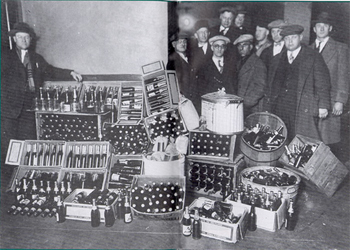 in 1907, there was a congressional concern that many Native Americans (Indians) had become addicted to alcohol as whites moved west, largely because the whites who ran reservation stores could, by the use of alcohol, entice the Indians out of some of the federal funds that were paid to them to help with their needs as the prairies as our (their) western territories became settled.
in 1907, there was a congressional concern that many Native Americans (Indians) had become addicted to alcohol as whites moved west, largely because the whites who ran reservation stores could, by the use of alcohol, entice the Indians out of some of the federal funds that were paid to them to help with their needs as the prairies as our (their) western territories became settled.
Oklahoma had many Indians, and was officially designated as Indian Territory after the Trail of Tears when the five civilized tribes (Cherokee, Chickasaw, Choctaw, Creek and Seminole) had been forcefully moved from southeastern states in the 1830s while Andrew Jackson was president. (Note: After the 1989 Land Rush into Indian Territory, the western part of Indian Territory became designated as Oklahoma Territory. Additionally, for reasons I will not address since they would add nothing to the story, the panhandle of today’s Oklahoma was not a part of any state and was known as “No Man’s Land” until just before Oklahoma was admitted as a state in 1907. )
Because of the widespread concern that Indians would become alcoholic, the U. S. Congress, when considering Oklahoma’s admission as a state, stipulated that in order to be admitted, Oklahoma’s state constitution must contain a provision that prohibited the sale of alcohol. So when nationwide prohibition provided in the 18th amendment was repealed in 1933, nothing changed in Oklahoma.
Oklahoma wasn’t the only “dry” state, though. I don’t know all the others or just what their reasons were, but Kansas was still dry until 1954 or 1955. and Louisiana had some rule whereby county sheriffs could confiscate liquor which didn’t have a Louisiana state liquor stamp and use the proceeds for some purpose that helped fill the state coffers – or sheriffs’ pockets. If a reader wonders wants to know more about the Louisiana situation, he or she might be able to find an old-age Cajun who can explain it. Some states, like Texas, had county option on liquor sales, and there are still some that have county, city, town, or other jurisdiction option. It still exists in some form in many Texas jurisdictions. But that is enough discussion of other states or jurisdictions, since I don’t have enough knowledge of their facts to address them in a way that I know is completely factual. So back to Oklahoma’s eventual repeal of prohibition, which is what the subject of this story is supposed to be.
Being a “dry” state didn’t mean Oklahoma was dry. Oklahoma bootleggers obtained liquor from surrounding states to sell in Oklahoma, but to buy liquor from them, potential buyers had know who the bootleggers were. That wasn’t very difficult. A U. S. law required any seller of liquor to buy a Federal liquor license each year. Bootleggers didn’t mind violating a state law, but violations of a Federal law could mean big trouble – even prison sentences - so each year they bought the required license and the names of those in who bought the liquor licenses were available to the public, if the public just knew how to find their names.
So each year, the Henryetta Daily Free-Lance did its civic duty and listed them in the newspaper. That way, everyone in town knew who they were and the phone book naturally had their phone numbers – or maybe the Free-Lance included the phone numbers. I still remember where the closest one to my house lived. I remember his name, too, but including it here would add nothing important to the telling of this story. There were no bootlegger customers at my house. Nobody at our house drank at all. But there was one humorous exception to this, though. My father was the accountant for several coal mining operations and often helped retiring miners complete documents needed to qualify for the United Mine Workers pension. Just before Christmas in 1940, a retired miner gave him a bottle of whiskey (it was called “Four Roses”) in appreciation for his help.
There were no bootlegger customers at my house. Nobody at our house drank at all. But there was one humorous exception to this, though. My father was the accountant for several coal mining operations and often helped retiring miners complete documents needed to qualify for the United Mine Workers pension. Just before Christmas in 1940, a retired miner gave him a bottle of whiskey (it was called “Four Roses”) in appreciation for his help.
I am sure my father thanked him, but my father was a very religious man and when he got home with the bottle, he started talking about how terrible it was that someone would give him a bottle of liquor at the time when the world was celebrating the birth of Christ. Then started pouring the liquor out into the kitchen sink.
As it happened, his mother was visiting us from Illinois for that Christmas, and she made him stop. Then she reached into the cabinet to get a glass, and poured herself a drink. My two sisters – Betty, the older, who is no longer living, and Dora, the younger, how now lives in Poteau, Oklahoma, were stunned, but also amused, by what we had just seen our grandmother do. 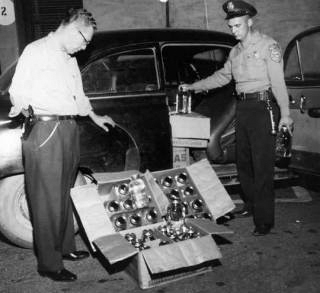 Back to the story. Most bootleggers didn’t bring the liquor into the state themselves. Instead, they hired people (I will call them “runners”) to bring it in for them, and those people had a special vehicle problem. When runners brought in liquor with enough volume to make a trip profitable, the weight made the rear end of their car hang very low, which made easy for law enforcement people to spot them. (There was some way under the Oklahoma laws that you didn’t actually have to sell liquor to break the law – like maybe just having it without having evidence of having paid some supposed Oklahoma tax.) To overcome that problem, runners had extra strong springs placed at the rear of their cars. With those springs, it then became easy to spot the cars of runners when they didn’t have liquor because the rear ends of their cars were up high.
Back to the story. Most bootleggers didn’t bring the liquor into the state themselves. Instead, they hired people (I will call them “runners”) to bring it in for them, and those people had a special vehicle problem. When runners brought in liquor with enough volume to make a trip profitable, the weight made the rear end of their car hang very low, which made easy for law enforcement people to spot them. (There was some way under the Oklahoma laws that you didn’t actually have to sell liquor to break the law – like maybe just having it without having evidence of having paid some supposed Oklahoma tax.) To overcome that problem, runners had extra strong springs placed at the rear of their cars. With those springs, it then became easy to spot the cars of runners when they didn’t have liquor because the rear ends of their cars were up high.
I remember seeing them frequently. Naturally, the law enforcement people could spot them, too, but there wasn’t any law that made it illegal for the back end of a car being higher than the front end. Still, there must have been a way where, once a high end was noticed, they could identified and later found with loads. I never knew how that was avoided – but it apparently was. It could be that money changing hands was at least a part of the reason, because money changing hands was a matter that frequently kept prohibition alive.
Through the years after the federal prohibition ended, there were five statewide elections by the mid 1950s to try to amend or repeal Oklahoma’s constitutional provision that didn’t allow sale of liquor. Each time, bootleggers furnished the money to buy radio time for ministers to get on the air and speak in favor of the state’s remaining dry. The people voted down proposed amendments so often that at one point, Oklahoma’s favorite son, Will Rogers, was once quoted as saying that Oklahomans would vote “dry” as long as they could stagger to the polls. 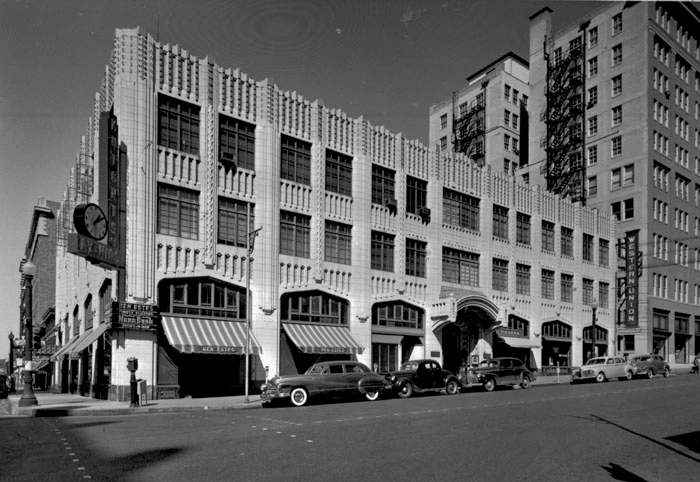 Oklahoma wasn’t really completely dry, though. Members of the downtown Tulsa Club (and the same type of club in Oklahoma City) could get it there at lunch, dinner, or any time the club was open. The country clubs had it, too. I don’t know just how they handled determining how individual members paid for their liquor, or where individual member’s liquor was stored, but they managed it. With the passage of time, there was an increase in the realization that prohibition was really a situation that made it difficult for the less financially able to obtain liquor.
Oklahoma wasn’t really completely dry, though. Members of the downtown Tulsa Club (and the same type of club in Oklahoma City) could get it there at lunch, dinner, or any time the club was open. The country clubs had it, too. I don’t know just how they handled determining how individual members paid for their liquor, or where individual member’s liquor was stored, but they managed it. With the passage of time, there was an increase in the realization that prohibition was really a situation that made it difficult for the less financially able to obtain liquor.
Those who were better off from a financial standpoint could readily obtain it at private clubs. When I was a young CPA in Tulsa, Southern Hills Country Club was a client of a CPA firm I worked for and when I was there with others working on its audit, the top club accountant had us take a break with him each afternoon and we all had one drink of some kind – the first actual liquor drinks I ever had. (Well, isn’t really true. There were a few times when several of my highs school friends were at my best friend’s house and he would get into his father’s liquor cabinet – even with prohibition he had a liquor cabinet – take out a bottle and pass it around for each of us to take a swig.)
Since the state law wasn’t obeyed, and it appeared that some people were probably getting paid to not enforce the law, many people were upset about the whole situation and the desire to amend the state constitution continued to grow. But in 1957, Oklahomans even defeated a proposed amendment to allow county option on prohibition. 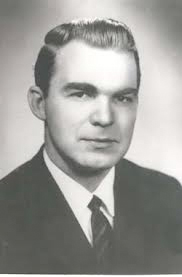 Then in 1958, J. Howard Edmondson, an attorney from Muskogee, ran for Governor with a plan. He turned out to be a good governor, and was later appointed to the U. S. Senate to replace long-time Senator and former Governor, Robert S. Kerr, who resigned in early 1963 just before the end of his last term so Edmondson could resign as governor and be immediately appointed as Kerr’s replacement by the former Lieutenant Governor, now Governor, George Nigh.
Then in 1958, J. Howard Edmondson, an attorney from Muskogee, ran for Governor with a plan. He turned out to be a good governor, and was later appointed to the U. S. Senate to replace long-time Senator and former Governor, Robert S. Kerr, who resigned in early 1963 just before the end of his last term so Edmondson could resign as governor and be immediately appointed as Kerr’s replacement by the former Lieutenant Governor, now Governor, George Nigh.
Edmondson’s plan, and the theme of his campaign, was to give Oklahomans what he called a real choice about repealing prohibition - a choice he believed was bound to succeed.
As mentioned earlier, the state had never really been dry, and alcohol had always been available to those who were the more financially able through membership in private clubs. Edmondson promised in his campaign, to dry up the state for everyone and to make liquor completely unavailable throughout the state for a period of three months and then have an election to either keep it that way or to amend the state constitution. And make it dry he did. All the private clubs were raided, and after they had replenished their supplies, they were raided again. More patrolmen were put on the highways near the state borders and they stopped and searched many incoming cars, so that bootleggers had trouble even getting alcohol. All this was on the radio and TV news. Still, there was opposition to repeal by ministers and others whose beliefs just wouldn’t accept the idea. It was quite a campaign. Then, May, 1959, the repeal election was held. I recall that when I went into the voting booth, I had been sufficiently impressed by the campaign that I expected to vote for the amendment. But once I was in the booth, because of my background and family of beliefs, I just couldn’t vote for the amendment and voted against it. But it passed, I think by a large majority, and Oklahoma was no longer a dry state. 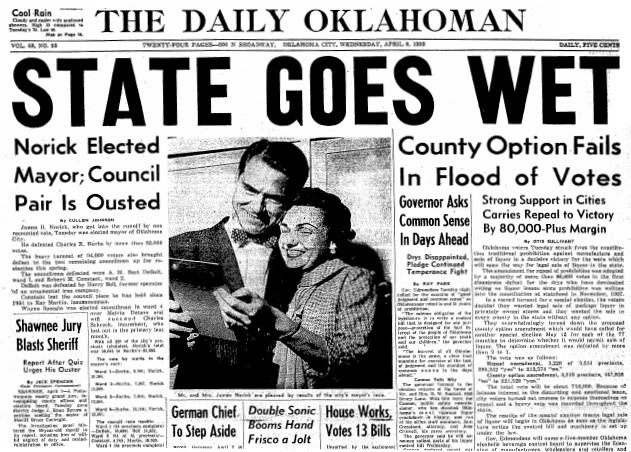 With the change, those who drank liquor were pleased to find that they now a wider selection of brands. But there were things that those who had favored the change didn’t like.
With the change, those who drank liquor were pleased to find that they now a wider selection of brands. But there were things that those who had favored the change didn’t like.
First, buyers now had to go to a state-licensed liquor store to get alcohol, whereas before, they called a bootlegger and he, or someone working for him, delivered it.
Next, Oklahoma instituted a state liquor tax. While the liquor brought into the state before had had a state tax paid on it, the new Oklahoma tax was higher than the tax of any of the states from which it had been transported before repeal.
I think, that when the constitution was amended, there were there were still limitations on where liquor could be purchased by the drink, and it was several years before that was change.
So there it is. Oklahoma was dry for its first 52 years as a state, but has now been wet for 56 years.
Note: The foregoing doesn’t address how beer with more than a 3.2% alcohol content was handled in Oklahoma or other states because that would require many pages to cover all the different practices and detract from the purpose of the story. But when Oklahoma was dry, beer with no more than 3.2% alcohol content could be purchased legally in stores, and be drunk in taverns, bars or pool halls, so there was already a good supply of taverns, bars and pool halls in Henryetta and other towns.
Publisher's Note: It wasn't until 1984 that voters approved the legal sale of liquor by the drink.
Prior to that, "liquor by the wink" was the norm which saw people buying their liquor from the stores then taking it to the bars to have it served to them. Ever since the 1959 vote that repealed prohibition, people who wanted stronger alcohol had to go to a state-licensed package store and those who wanted to drink in an establishment had to bring in their own bottle to a licensed private club
This was the third try in 12 years and received approval by 52 percent of the statewide voters or a total of 425,772.









